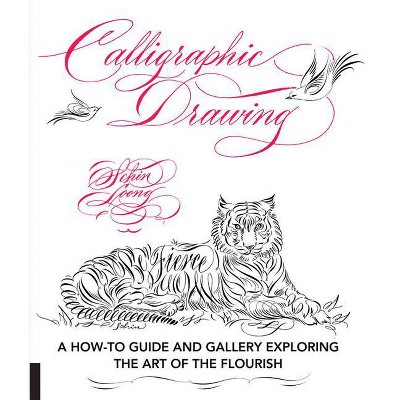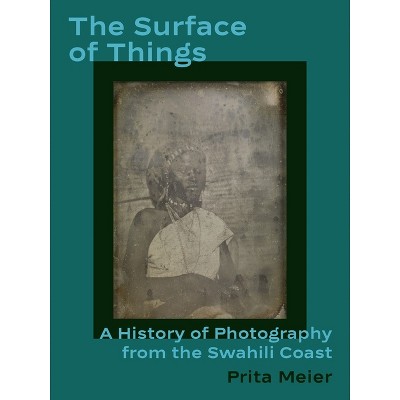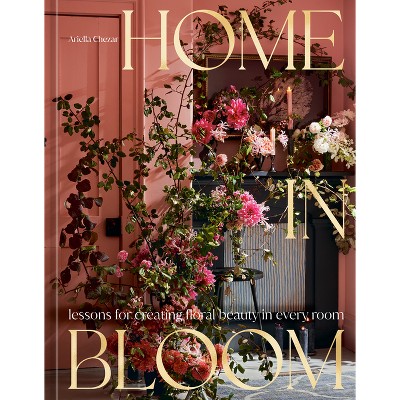Sponsored

Inessential Colors - by Basile Baudez (Hardcover)
$71.00Save $4.00 (5% off)
In Stock
Eligible for registries and wish lists
Sponsored
About this item
Highlights
- The first comprehensive account of how and why architects learned to communicate through color Architectural drawings of the Italian Renaissance were largely devoid of color, but from the seventeenth century through the nineteenth, polychromy in architectural representation grew and flourished.
- About the Author: Basile Baudez is assistant professor of architectural history in the Department of Art and Archaeology at Princeton University.
- 288 Pages
- Architecture, Design, Drafting, Drawing & Presentation
Description
About the Book
"Today, architectural plans and drawings are always signposted with colors: pink for pochâe, or exterior walls, yellow for certain interior elements, and blue for details and ornament. How and why did this practice begin? The craft of architectural drawing-plans, sections, and details-was originally developed during the Italian Renaissance under the influence of engravers. The results were correspondingly monochromatic, relying on representation through line and perspective. But in the 1800s, an influx of painters-turned-architects in Holland and Germany brought color into their designs. This innovation eventually spread throughout Europe, inspiring French architectural engineers to adopt a common color system in order to more clearly communicate their designs across the kingdom, and giving architects another tool with which to impress academic juries and the public. In this book, author Basile Baudez argues that color was not an essential feature of architectural drawing until European architects adopted a precise system of representation in response to political and artistic rivalry between countries, as well as the needs of public exhibitions. He shows that French engineers learned to use color from the Dutch colleagues they worked with and then fought against during the Dutch War (1672-78), demonstrating that a color-based system was published in French manuals for military engineers and used by royal architects, and that architects who wanted to compete with paintings for the public's attention needed to use the familiar language of color. This history reveals that color came to have three functions: to imitate architectural materials, to establish concise representational conventions that could span large geographic distances, and to seduce the public, including tourists. The book will feature a large number of fascinating, previously unpublished archival drawings, and will contribute to growing interest in the origins and professionalization of architecture, as well as the history of drawing as a medium"--Book Synopsis
The first comprehensive account of how and why architects learned to communicate through color
Architectural drawings of the Italian Renaissance were largely devoid of color, but from the seventeenth century through the nineteenth, polychromy in architectural representation grew and flourished. Basile Baudez argues that colors appeared on paper when architects adapted the pictorial tools of imitation, cartographers' natural signs, military engineers' conventions, and, finally, painters' affective goals in an attempt to communicate with a broad public. Inessential Colors traces the use of color in European architectural drawings and prints, revealing how this phenomenon reflected the professional anxieties of an emerging professional practice that was simultaneously art and science. Traversing national borders, the book addresses color as a key player in the long history of rivalry and exchange between European traditions in architectural representation and practice. Featuring a wealth of previously unpublished drawings, Inessential Colors challenges the long-standing misreading of architectural drawings as illustrations rather than representations, pointing instead to their inherent qualities as independent objects whose beauty paved the way for the visual system architects use today.Review Quotes
"This impressive, thought-provoking book focuses on early modern presentation drawings of buildings . . . [asking] what the use of colour, or the absence of it, can tell us about the way architects communicated with patrons and the public. Wide-ranging in its coverage . . . the author demonstrates an extraordinarily broad command of early modern architecture in its different national settings."---Simon Pepper, Architectural History
"The increasing complexity of building in combination with the urgent need to tackle the climate crisis challenges the traditional role of the architect as designer and asks us to reconsider what matters most in the built environment. At the same time, architecture today too exists in the maelstrom of digital images produced by humans and nonhumans alike sometimes at a considerable distance from actual buildings. Studies like Baudez's book enrich this conversation by complicating our understanding of such omnipresent artifacts as colored representations of buildings, but also by reminding us that architecture and its image have always played multiple and sometimes contradictory roles."---Maarten Delbeke, H-Net Reviews
"This volume is a highly original and stimulating study of paper-based material culture. With an impressive sweep across forms, media, and cultural-geographic, boundaries, it does what we expect the best object-based scholarship to do. It helps us understand why an artifact of the past looks the way it does, and how that contributes to its meaning in its own society. . . . Inessential Colors's strength lies in the novelty of its approach, the breadth of original works consulted, and the attentive examination of each one."---Claudia Funke, Papers of the Bibliographical Society of America
"In Inessential Colors, Basile Baudez argues that the colors in architectural drawings serve three purposes: to imitate the world, to act as conventional signs for building materials and functions, and to move and delight--to affect--the viewer. . . . For anyone interested in the history and technique of architectural drawings, Basile Baudez's very readable and beautifully illustrated book, which includes a detailed appendix titled 'The Draftsman's Tools, ' is highly recommended."---Martin Olin, Journal of the Society of Architectural Historians
"This richly illustrated, fascinating study of the nature of architectural drawing, and the conventions that have underlain it through time, is essential reading for those interested in buildings."---Benjamin Riley, New Criterion
"A significant contribution to understanding the development of color drafting methodologies and their influences on architectural history."---Paul Emmons and Negar Goljan, Montreal Architectural Review
"[Inessential Colors] differs from previous publications on this subject, which tend to focus more on polychromy in representations of buildings already in existence. A chapter on the materials and tools of the architect or drafter add much to the content."-- "Choice"
"Winner of the Alice Davis Hitchcock Medallion, Society of Architectural Historians of Great Britain"
"[Baudez's] meticulous, methodical study will likely appeal more to scholars than to the general public, but no matter the audience, this extensively researched, richly illustrated book sheds new light on this overlooked aspect of architectural history and practice."---Lauren Moya Ford, Hyperallergic
"A splendidly illustrated and deeply researched monograph. . . . The extraordinary value of Baudez's research and publication lies precisely in its vast range, the prolixity of its all-colour illustrations and archival references, that allow the reader to examine the evidence and parse the interpretations, and that opens up a historical examination of manual representation in an age when its overcoming by digital techniques has rendered it all but obsolete."---Anthony Vidler, Drawing Matter
"Basile Baudez offers a riveting reading of architectural representations. By considering them over a long period and a wide geographic terrain, he offers a clear and erudite synthesis. Remarkably high-quality, renewed illustrations support this elegant study."---Alexia Lebeurre, CAA Reviews
About the Author
Basile Baudez is assistant professor of architectural history in the Department of Art and Archaeology at Princeton University. His books include Architecture et tradition académique and A Civic Utopia: Architecture and the City in France, 1765-1837.Dimensions (Overall): 11.65 Inches (H) x 9.21 Inches (W) x 1.02 Inches (D)
Weight: 3.55 Pounds
Suggested Age: 22 Years and Up
Number of Pages: 288
Genre: Architecture
Sub-Genre: Design, Drafting, Drawing & Presentation
Publisher: Princeton University Press
Format: Hardcover
Author: Basile Baudez
Language: English
Street Date: December 21, 2021
TCIN: 1004455447
UPC: 9780691213569
Item Number (DPCI): 247-24-4074
Origin: Made in the USA or Imported
If the item details aren’t accurate or complete, we want to know about it.
Shipping details
Estimated ship dimensions: 1.02 inches length x 9.21 inches width x 11.65 inches height
Estimated ship weight: 3.55 pounds
We regret that this item cannot be shipped to PO Boxes.
This item cannot be shipped to the following locations: American Samoa (see also separate entry under AS), Guam (see also separate entry under GU), Northern Mariana Islands, Puerto Rico (see also separate entry under PR), United States Minor Outlying Islands, Virgin Islands, U.S., APO/FPO
Return details
This item can be returned to any Target store or Target.com.
This item must be returned within 90 days of the date it was purchased in store, shipped, delivered by a Shipt shopper, or made ready for pickup.
See the return policy for complete information.
Trending Non-Fiction

$19.31
was $20.98 New lower price
4 out of 5 stars with 62 ratings

$4.59
MSRP $7.99
Save $5 when you spend $20 on select books
4.8 out of 5 stars with 121 ratings

$6.20
MSRP $10.95
Save $5 when you spend $20 on select books
4.8 out of 5 stars with 33 ratings

$7.09
MSRP $9.99
Save $5 when you spend $20 on select books
4.9 out of 5 stars with 46 ratings














